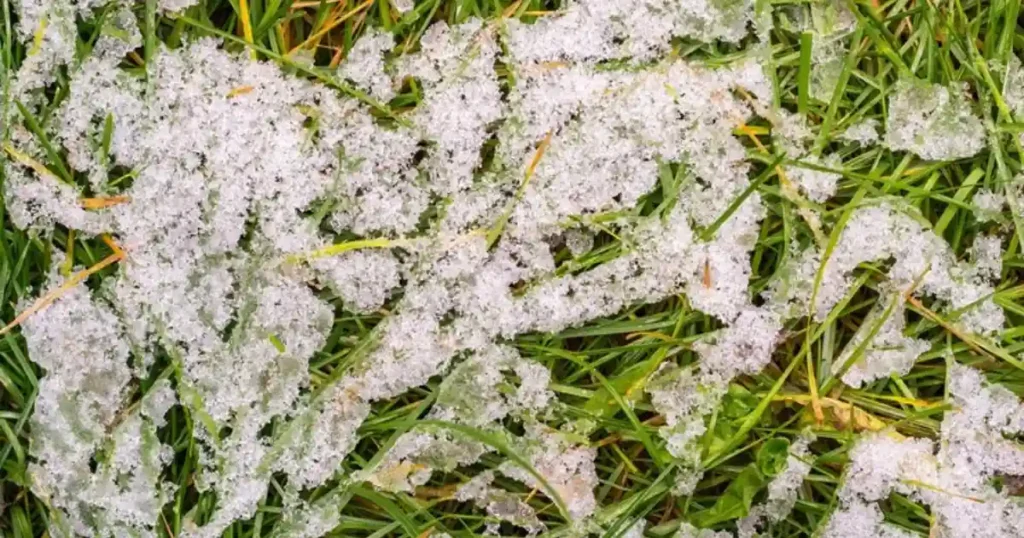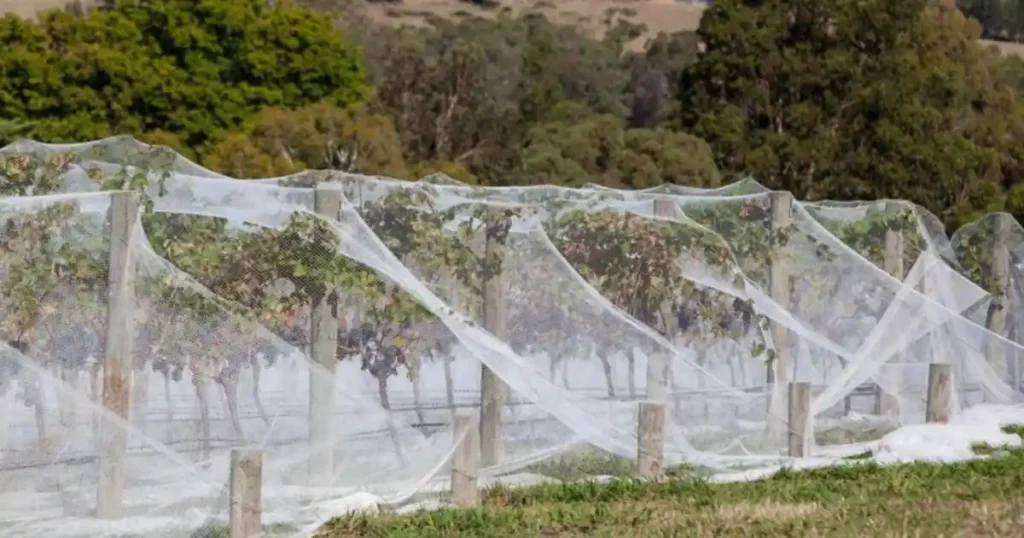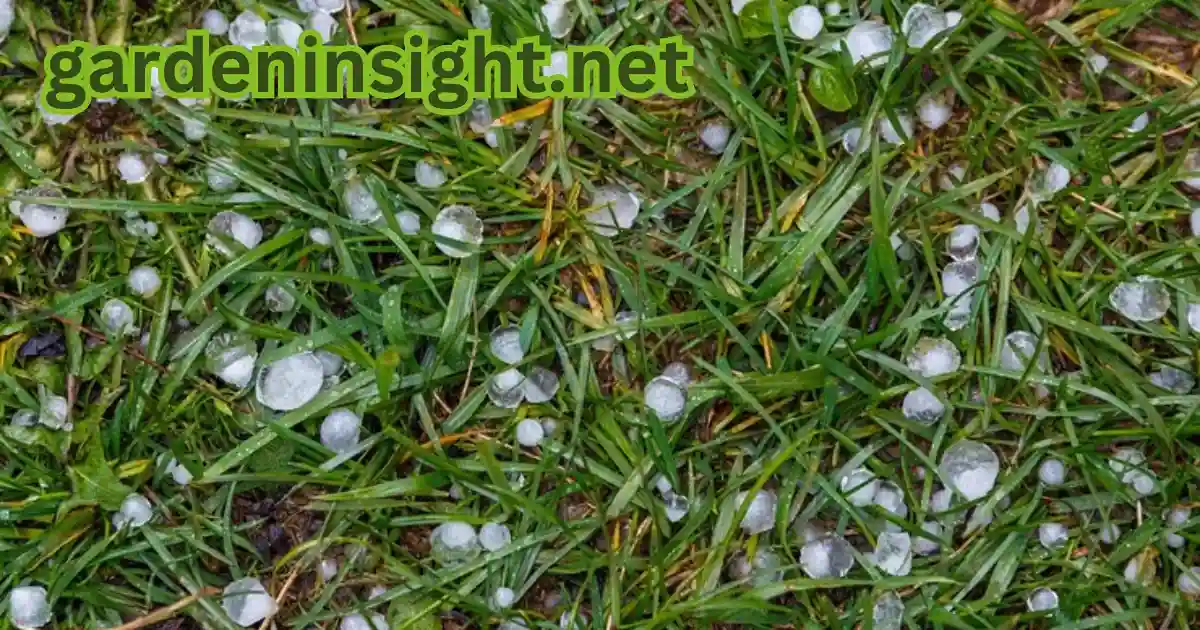Hailstorms can cause significant damage to gardens, shredding leaves, breaking stems, and even ruining crops.
Protecting your garden from hail is essential to ensure its health and productivity. This guide offers practical tips and methods on how to protect garden from hail, covering materials, tools, and preparation techniques.
We’ll also address frequently asked questions to help you make informed decisions.
Understanding Hail and Its Impact on Gardens

Hail forms when ice pellets accumulate in storm clouds and fall to the ground, often causing significant damage to plants. Gardens are especially vulnerable due to their exposure to the open sky. To protect your garden effectively, it’s important to understand hail’s impact:
- Physical Damage: Leaves, stems, and fruits can be punctured or broken.
- Soil Disruption: Heavy hailstorms can compact soil, reducing its aeration and drainage.
- Plant Vulnerability: Young and delicate plants are more susceptible to damage.
Protective Materials for Shielding Gardens from Hail
Using the right materials can reduce hail damage significantly. Below are some effective options:
| Material | Benefits | Drawbacks |
|---|---|---|
| Hail Netting | Affordable and easy to install | May require support structures |
| Polycarbonate Sheets | Durable and long-lasting | Higher initial cost |
| Garden Fabrics | Lightweight and versatile | Limited durability |
| Wooden Frames | Customizable protection | Requires more effort to build |
| Greenhouses | Comprehensive coverage | Expensive to install |
These materials vary in cost and ease of installation, so choose one that fits your budget and needs.
Preparation To Protect Garden from Hailstorms

Timely preparation to protect garden from hailstorms is essential to minimize hail damage. Here are some steps:
- Monitor Weather Reports: Keep track of hailstorm forecasts to prepare in advance.
- Install Hail Netting: Secure the netting over your plants for a quick and efficient shield.
- Reinforce Structures: Ensure garden covers and greenhouses are stable enough to withstand strong winds and hail.
- Move Potted Plants: Relocate vulnerable potted plants to sheltered areas like garages or patios.
- Prune and Trim: Remove dead branches to prevent hail from causing additional damage.
How To Protect Garden From Hail Storm
Protecting your garden from hailstorms is crucial to preserving your hard work. Start by monitoring weather forecasts closely so you have time to prepare.
Use sturdy row covers or netting to shield vulnerable plants, and consider adding a layer of mulch for extra protection. For larger plants or trees, individual covers or even strategically placed umbrellas can help minimize damage.
After a hailstorm, assess any damage and prune broken branches to encourage healthy regrowth. With some preparation and quick action, you can help your garden weather any storm.
How to Protect Plants From Hail

Protecting your garden doesn’t have to break the bank. Here are some budget-friendly ideas:
- DIY Covers: Use old bedsheets or tarps as temporary shields.
- Recycled Materials: Repurpose items like wire mesh or plastic containers.
- Strategic Planting: Group vulnerable plants under larger, sturdier ones for natural protection.
Using Garden Covers to Protect Plants
Garden covers are a practical solution for shielding plants from hail. Here’s how they help:
- Impact Absorption: Covers absorb the force of hail, reducing damage to plants.
- Light Transmission: High-quality covers allow sunlight to pass through, ensuring plant growth.
- Reusable Options: Many garden covers are durable and can be reused for multiple seasons.
When choosing a cover, ensure it’s UV-resistant and provides sufficient coverage.
Role of Greenhouses in Hail Protection

Greenhouses offer the most robust protection against hailstorms. They provide:
- Year-Round Shielding: Protect plants from hail, wind, and extreme weather.
- Controlled Environment: Maintain optimal temperature and humidity levels.
- Durability: Polycarbonate panels and glass structures withstand heavy impacts.
Although greenhouses are a larger investment, they offer long-term benefits for serious gardeners.
Plants Resistant to Hail Damage
Some plants are naturally more resilient to hail. Consider planting these:
| Plant Type | Characteristics |
|---|---|
| Shrubs | Strong stems and dense foliage |
| Perennials | Regrow quickly after damage |
| Root Vegetables | Underground growth minimizes risk |
| Woody Herbs | Hardy structure resists impacts |
Choosing hail-resistant plants can reduce the need for additional protective measures.
How To Protect Garden from Wind And Hail
Safeguarding your garden from the damaging effects of wind and hail requires proactive measures. Begin by selecting a location sheltered from prevailing winds, if possible.
Utilize windbreaks like fences, hedges, or trellises to reduce wind impact. For hail protection, employ sturdy row covers or netting to shield vulnerable plants.
Consider individual covers for larger plants and secure any loose items that could become projectiles. After a storm, promptly assess and address any damage to ensure your garden thrives despite challenging weather.
How to Install Hail Netting Over a Garden

Installing hail netting is straightforward. Follow these steps:
- Measure the Area: Determine the size of the netting required.
- Build a Frame: Use wooden or metal stakes to create a supportive structure.
- Secure the Netting: Drape the netting over the frame and fasten it with clips or ties.
- Ensure Coverage: Check that all plants are fully protected without sagging.
Repairing a Garden After a Hailstorm
Even with precautions, some damage may occur. Use these tools to restore your garden:
- Pruners: Remove damaged leaves and stems to encourage healthy growth.
- Soil Aerators: Loosen compacted soil to improve drainage.
- Fertilizers: Apply nutrients to boost plant recovery.
Regular maintenance ensures your garden bounces back quickly after a storm.
Conclusion
To protect garden from hailstorms is crucial for maintaining its beauty and productivity. By using materials like hail netting, preparing in advance, and employing affordable solutions, you can minimize damage effectively.
Greenhouses offer comprehensive protection, while hail-resistant plants add natural resilience. In the event of a storm, quick repairs and proper tools will help your garden recover.
Implement these strategies to safeguard your plants and enjoy a thriving garden, no matter the weather.
FAQs
Some of the frequently inquired questions regarding the ways to protect garden from hail are as follow:
What materials can shield a garden from hail?
Hail netting, polycarbonate sheets, garden fabrics, and greenhouses are effective materials for shielding gardens from hail. Each offers unique benefits based on budget and garden size.
When is the best time to prepare for hailstorms?
The best time to prepare is before the hail season begins, typically in spring and early summer. Monitoring weather forecasts can also help with timely preparations.
How do garden covers protect plants from hail damage?
Garden covers absorb the impact of hail, preventing direct damage to leaves, stems, and fruits while allowing sunlight and air circulation.
What tools help repair a garden after a hailstorm?
Essential tools include pruners for removing damaged parts, soil aerators for loosening compacted soil, and fertilizers to replenish nutrients.
How to protect plants from hail storms affordably?
Affordable methods include using old sheets or tarps, repurposing materials like mesh or plastic, and planting hail-resistant crops.
